Moving More at the Workplace
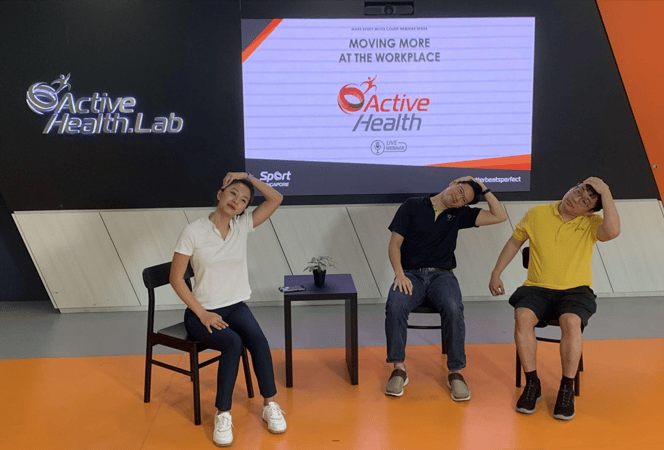

Imagine an hourglass sitting on the table during meetings, counting down to a very important moment. Once it’s filled up, everyone in the room will stand up and start moving.
In the third of a series of Make Every Move Count webinars organised by Active Health, Dr Gary Ang, Consultant, Wellness and Preventive Health (Workplace Health) at the National Healthcare Group and fellow panellist, Mr Christopher Koh, General Manager of the Workplace Safety and Health Council (WSHC), discussed the importance of embracing the culture, by both employers and employees, to move more at the workplace. They also shared tips on what organisations can do to build the culture.
Taking a break to stand during meetings. Walking to and from the office during lunch. Even doing stretching and flexing exercises while seated. These are small steps anyone can take - but they bring about big benefits to health and mental wellbeing.
➤ Watch the Webinar Highlights

While Singaporeans may spend much of their time at work, they should not let their busy schedules get in the way of keeping healthy. It’s not uncommon for people to gain weight at work due to their sedentary lifestyles. In fact, said Dr Ang, some studies in Singapore show that an average adult can put on 3kg per year of work. Finding ways to get up and moving at the office can help combat that.
The Singapore Physical Activity Guidelines (SPAG) recommend engaging in physical activity not just at home or during times of leisure. Singaporeans should also be getting up and moving at work to help them get 150min or more of physical activity a day.
Dr Ang said: “It’s very easy to say: ‘Oh, I work long hours. I cannot exercise.’ The question people should be asking is: ‘I work long work hours. What can I do to be able to exercise rather than using that as an excuse?’”
To find time to exercise, Mr Koh said people could find ways to integrate physical activity into their daily work routines. This could include alighting one MRT station or a couple of bus stops before the office and walking the rest of the way, or taking the stairs to get to the office instead of the lift.
These little blocks of movement matter. Brisk walking to or from the MRT fast enough to get the heart rate up - so that a person “can talk but can’t sing”, as Dr Ang puts it - can help you clock up minutes to meet the 150 to 300 minute of moderate physical activity a week recommended by the SPAG.
Mr Koh said: “It’s a matter of expanding the idea of what conventional exercise can be. There are many forms. Just take advantage of what you already do, and then look at integrating physical activity as part of that.”
Dr Ang shared that besides having standing breaks during meetings at work, his department also takes a break every day at 10.30am and 3.30pm to go for a short five-minute walk together. Not only does this get them moving and away from their screens, it also provides opportunities for bonding and catching up that help to build team morale.
Getting up and moving at work can help combat body aches and stiffness from prolonged hours of sitting, something many people complain of.
➤ Click here for Office Workout Resource
And there’s more. Keeping mobile can help people improve their mood and focus, which translates to spillover benefits at work, such as better attention and increased productivity, said Mr Koh.
After exercise, the body produces feel-good hormones like dopamine, which play a part in regulating sleep, and improving memory and attention, and also reduces stress hormones like cortisol, which are linked to depression and anxiety.
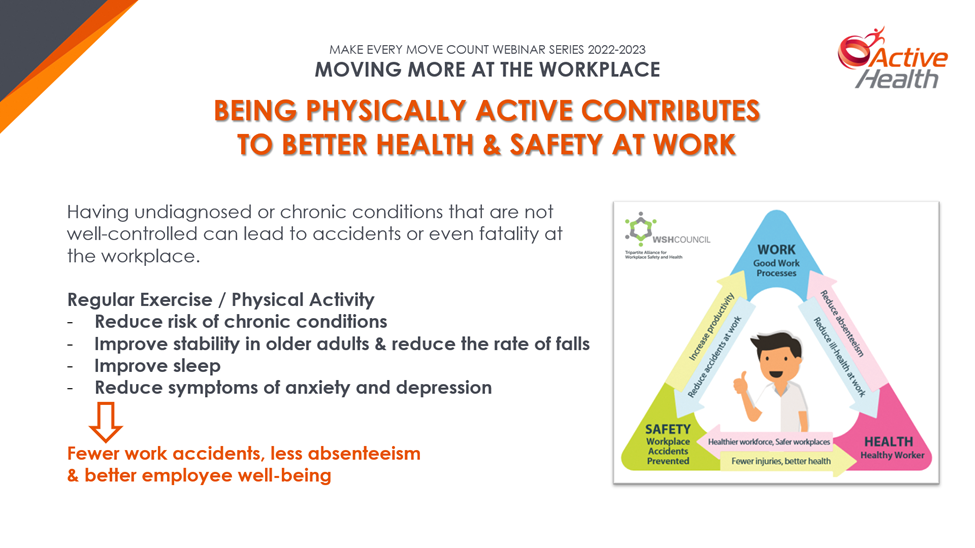
Regular physical activity also places people at less risk of chronic conditions, and improve stability in older adults, which reduces the likelihood of falls.
All this means big benefits at the workplace: fewer work accidents, less absenteeism and improved wellbeing.
This is why both employees and employers should make a serious effort to encourage more opportunities for movement and activities at the office.
The problem, said Dr Ang, is that not many businesses see it as a priority – even though they should. He said: “The thing is that, it may not be a priority now, but it will come back and bite you in terms of higher medical claims and productivity losses.”
Everyone can play a part in inculcating and normalising a culture of keeping active. Bottom-up efforts like people banding together to start jogging or cycling groups at the office is a way to kickstart things.
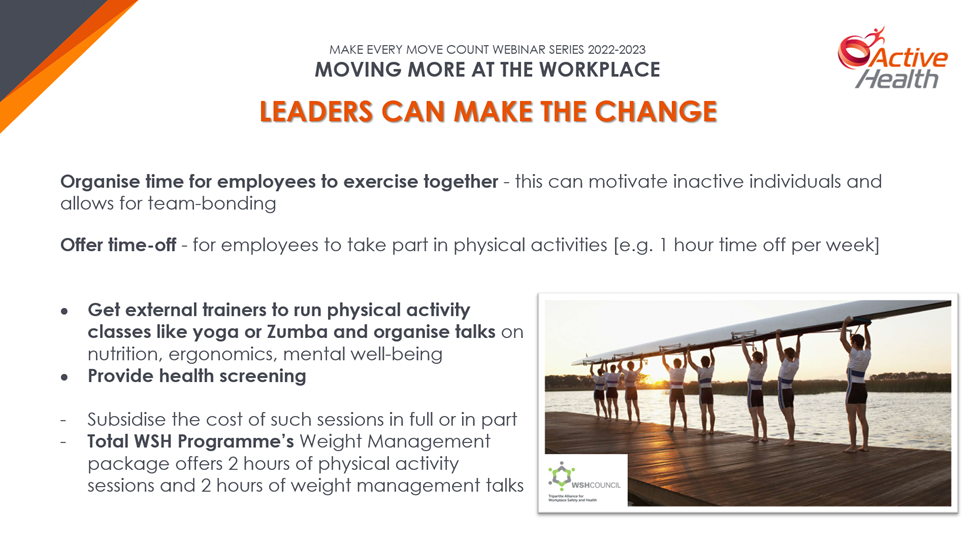
Mr Koh said that getting management – for instance the CEO or MD of an organisation – involved in dedicated movement or healthy lifestyle programmes would send a strong signal that the company is committed to a culture of health and wellbeing as well.
Leaders can pave the way for change at the workplace by setting aside time for employees to exercise together, or offering time off for employees to participate in physical activity.
And they’re important role models too. If they, too get up and stretch during meetings, or do some quick brisk walking after lunch, it helps normalise movement at the workplace.
Mr Koh said, “Getting bosses to recognise that workforce health is good for business is part and parcel of WSHC’s mission: healthier employees tend to take less medical leave, and be more focused and motivated. Once management is convinced, there are so many ways to create that healthy workplace culture.”
This could be as simple as organising a group activity, like a walk in the park. Or it could be a more structured event with an element of fun and team bonding, like an “amazing race”-type of session at an offsite location, or regular zumba or yoga sessions.
“It’s fun and that might trigger people who maybe didn’t think about exercising to start getting addicted to exercise,” said Mr Koh. And organising such activities is also a way to encourage people to come back to the office by building a sense of team spirit, noted Dr Ang.
➤ Get Tips from Active Health Coach
Join our workshops and learn how to Move Better.
➤ Read More:





![ActiveSG Academies and Clubs Logo (Solid Colour)[8647]](https://www.activesgcircle.gov.sg/hs-fs/hubfs/ActiveSG%20Circle%202023Theme/images/ActiveSG%20Academies%20and%20Clubs%20Logo%20(Solid%20Colour)%5B8647%5D.png?width=150&height=65&name=ActiveSG%20Academies%20and%20Clubs%20Logo%20(Solid%20Colour)%5B8647%5D.png)




-01.png?width=200&height=141&name=Team%20Singapore%20Logo%20(Red)-01.png)





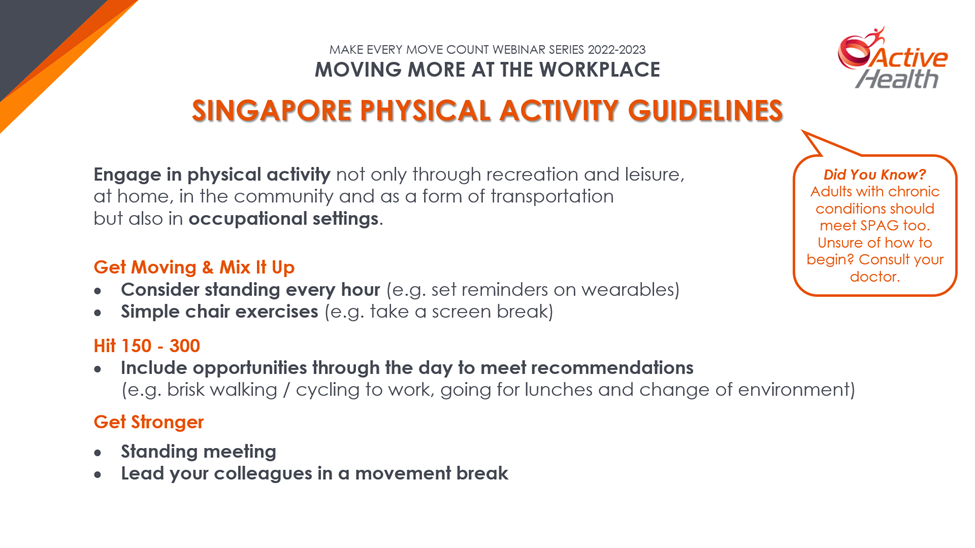
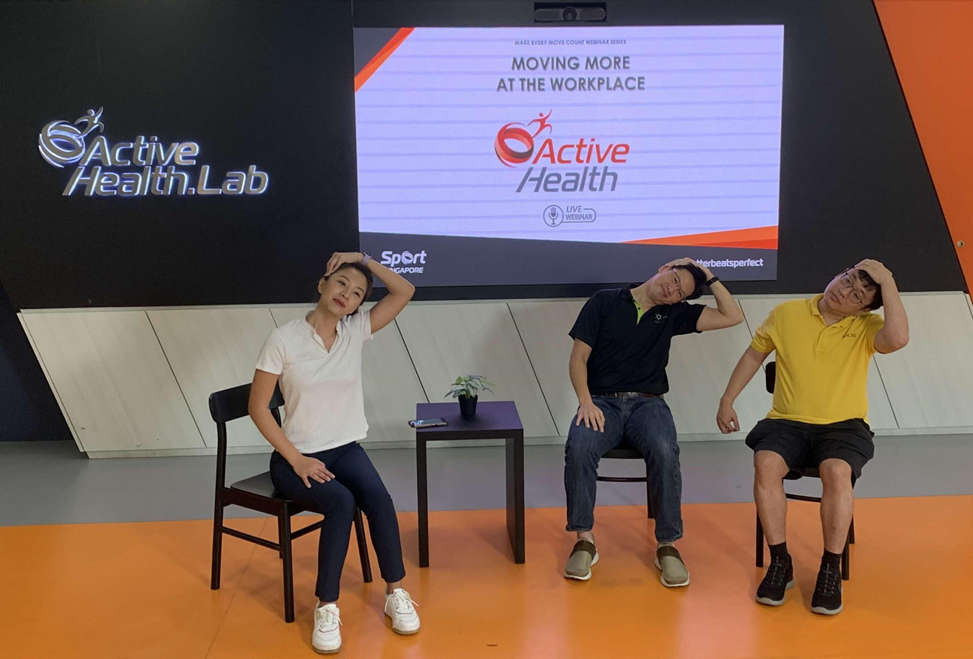

.webp?width=120&height=120&name=Seniors%20Sports%20Day%2c%20Photo%20Credit%20-%20Sport%20Singapore%20(5).webp)



